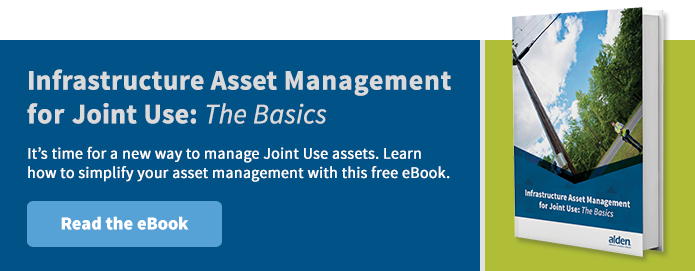Data Asset Management: Current Challenges and Solutions
 Today’s utility asset data is a vast world of information. Much of it is valuable; some of it is not. Asset owners hold data about many different asset types (utility poles, underground conduit in manholes or vaults, towers, cables, etc.), in many different formats, across far too many spreadsheets, databases, paper records and emails.
Today’s utility asset data is a vast world of information. Much of it is valuable; some of it is not. Asset owners hold data about many different asset types (utility poles, underground conduit in manholes or vaults, towers, cables, etc.), in many different formats, across far too many spreadsheets, databases, paper records and emails.
This data includes basic attributes such as asset location, dimensions, age, attachers and ownership. It also includes more complex information such as load calculations, maintenance schedules, audit logs, billing and project planning for asset replacements.
Sometimes the necessary data is exactly where it belongs when you need it, but often it is not. Or the data is outdated and unreliable. This is due, in part, to the lack of industry-wide standards or best practices for collecting, managing and sharing asset data.
Lack of Industry Data Standards
Each asset owner or attacher has a "system" for data management. With poles and underground infrastructure typically hosting numerous attachers, coordination is key. Thus, not having a system for easily interfacing with each other creates problems.
Current Problems Tied to Insufficient Asset Data Management
Inaccurate or inaccessible data may create safety hazards for field technicians and the public. It can also create delays in deploying new equipment. In recent years, Google and other broadband companies have struggled to deploy equipment in a race to market. Many broadband companies cannot get fast access to the poles and conduit infrastructure, due partly to the challenge of accessing correct data on existing field assets.
The Need for a Shared, Centralized Asset Database
A consistent system for storing, managing and sharing asset data needs to be established for owners and attachers. Rather than combining multiple databases, a shared, centralized asset database can help owners, attachers and all key stakeholders to:
- streamline communications
- collect, track and manage assets and attributes
- manage joint use process steps from initial request through completion
- establish project visibility
- create a central hub to share information between joint use stakeholders
- ensure data security to maintain confidentiality, where companies share ONLY the data they want to share
- automatically update other internal systems (GIS, WMS, etc.)
- maintain complete historical records of contracts, maintenance, notes and photos
Over the coming months, this blog will explore current data challenges and how a shared, centralized asset database could help resolve these issues, along with the impact this kind of data management tool may have for the future of joint use asset management for utilities and communications companies.
Read more on this topic: "Infrastructure Asset Management for Joint Use: The Basics".
